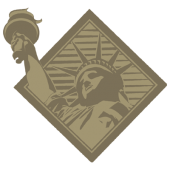
War is a drain on the resources of a society. War results in the death of a nation’s young men, and now, some women. Once begun, war cannot be controlled. All nations that “win” wars suffer, and those nations that “lose” wars can suffer greatly. Logic would indicate that every nation would do all in its power to avoid going to war. Nevertheless, many American officials do not fear war. At least when wars are fought on foreign soil, they seem to relish it. Rather than trying to avoid war, our leaders have been known to provoke wars. One of the techniques used to start a war is by arranging for “false flag” attacks on our own nation. Let’s review some history.
America’s Continual Warfare
Many efforts have been made to catalogue the numerous wars that have plagued our nation. A Congressional Research Service publication describes the duration of each war from 1817 onward. The globalist Council on Foreign Relations maintains an interactive map of conflicts across the world. In just the two decades after 9-11, America has fought more than a dozen “secret wars” from Africa to the Middle East to Asia, often with the awareness of only a few Members of Congress. There are reports that the CIA has been spending as much as $1 billion per year conducting a secret war in Syria.
It would be impossible to demonstrate that most of these wars were forced upon us; we chose to fight those wars. The influence of the arms merchants has long been studied, dating back to a famous book, Merchants of Death, published nearly a century ago. Other wars are fought to assist particular businesses. A man sometimes described as the most decorated American soldier in history, Marine Corps Major General Smedley Butler, grew tired of fighting wars around the world to serve the interests of American businesses. His short book, War is a Racket, exposes a series of unnecessary wars in which he fought.
But in choosing to go to war, America is not just serving the arms merchants and businesses. It is serving its own interests. As World War I-era anti-war radical Randolph Bourne insightfully explained: “War is the health of the state.” His writings reveal how, during wartime, dissent can be suppressed, and power can be accumulated. The people will yield up their liberties to the state which offers to protect them.
If government itself can benefit from war, would it really be surprising that government would not just welcome wars, but provoke wars as well?
Provoking War
America has a record of provoking wars that it thinks it can win. Consider the Mexican-American War of 1846. President James Polk provoked a war with Mexico in order to fulfill a campaign promise to extend American territory to the Pacific Ocean. Polk first attempted to buy the area that is now the southwestern United States, but Mexico refused to consider the offer:
On January 13, 1846, Polk ordered American forces into deeply disputed territory. In April, an army of approximately 4,000 men lead by General Zachary Taylor entered the Nueces Strip, a contested territory that Mexico and many Americans regarded as never having been a part of Texas. Polk knew this action would antagonize Mexican military forces stationed within sight of Taylor’s army at Matamoros.
Colonel Ethan Allen Hitchcock (grandson of Revolutionary hero Ethan Allen), who served with Zachary Taylor’s army, said, “We have not one particle of right to be here. It looks as if the government sent a small force on purpose to bring on a war, so as to have a pretext for taking California and as much of this country as it chooses.” (Emphasis added.) After Taylor blockaded the Mexican port of Matamoros, the Mexican army sent troops to respond, killing 11 American soldiers, and the war America wanted was on.
Pearl Harbor
To be sure, it was the Japanese that attacked Pearl Harbor on December 7, 1941. However, a distinguished historian, Robert Higgs, has published a thoughtful article on how America deliberately implemented a series of policies that were designed to provoke Japan into attacking the United States. And, although President Roosevelt knew, from our nation having broken the Japanese diplomatic code, that an attack on Pearl Harbor was imminent, he withheld that information from Army and Naval commanders in Hawaii.
Some report that FDR once said he was willing to fight a war against Japan, but he didn’t want to be blamed for starting it. The story is too long to tell here, but it is also explained in Robert Stinnett’s Day of Deceit: The Truth about FDR and Pearl Harbor, and Gordon Prange’s At Dawn We Slept. If you are willing to consider that possibility almost everything you were taught in school about the Japanese attack is wrong, these make great reading.
False Flag Attacks
While provoking others to fight wars can achieve the objectives of our leaders, it has a downside — it reveals America to be the aggressor — which can cause “blowback” from other nations. How much better it would be if government can get the war it wants without being blamed for starting it, and even better yet, if we can put the blame on the other nation. America can achieve these objectives by conducting “false flag attacks” on our own nation. The origin of the term “false flags” is a reference to a nation’s ship flying the flag of another country. To be sure, other nations have staged real or simulated attacks on their own side, claiming it was done by the enemy, as a pretext for going to war. But today we focus on America’s use of this technique.
Operation Northwoods
In the early 1960’s, America was determined to oust Fidel Castro and his Communist government from its position 90 miles off the Florida coast in Cuba. America wanted to initiate military action, but did not want to be seen as the aggressor in the eyes of the World – or the Soviet Union.
The solution proposed was no renegade operation — it was passed along to the Secretary of Defense by four-star General Lyman Lemnitzer, Chairman of the Joint Chiefs of Staff. The plan was to conduct a false flag operation known as “Operation Northwoods,” which had many components. Friendly Cubans in uniform would stage an attack on the base at Guantanamo, blowing up ammunition inside the base, starting fires, burning aircraft, lobbing mortar shells into the base doing “some damage” to installations. As if the plan was not clear, it stated that a “Remember the Maine” incident could be arranged, such as blowing up a U.S. ship in Guantanamo Bay. The plan was never carried out, and would never have been revealed, but for the declassification of the key document many years later.
Gulf of Tonkin
Perhaps the bloodiest result of a single false flag operation was the instigation of the Vietnam War. On August 4, 1964, President Lyndon Johnson announced to the nation that North Vietnamese vessels had attacked U.S. Navy ships in the Gulf of Tonkin. He asked for authority to send troops to Vietnam. Three days later, Congress passed the “Gulf of Tonkin Resolution,” authorizing the President to “take all necessary measures to repel any armed attack against the forces of the United States and to prevent further aggression.”
Evidence declassified in 2005 and 2006 reveals that the August 4 “attack” never happened. “[T]he evidence suggests a disturbing and deliberate attempt by Secretary of Defense [Robert] McNamara to distort the evidence and mislead Congress.” Commander James Stockdale, who led the first “retaliatory” American airstrike on North Vietnam, later wrote, “We were about to launch a war under false pretenses, in the face of the on-scene military commander’s advice to the contrary.” (Emphasis added.) In his book Dereliction of Duty, Lt. Gen. H.R. McMaster offers this theory for the motive for a war that resulted in the death of 58,000 Americans:
To enhance his chances for election, [Johnson] and McNamara deceived the American people and Congress about events and the nature of the American commitment in Vietnam. They used a questionable report of a North Vietnamese attack on American naval vessels to justify the president’s policy to the electorate and to defuse Republican senator and presidential candidate Barry Goldwater’s charges that Lyndon Johnson was irresolute and “soft” in the foreign policy arena. (Emphasis added).
The January 6 Attack on the Capitol
On January 6, 2021, an unarmed crowd of Donald Trump supporters, angered by election irregularities affecting the 2020 Presidential Election surged into the U.S. Capitol, delaying the certification of Biden’s victory. For the ensuing three years, the riot has been blamed exclusively on MAGA election deniers.
Since then, it has come to light that federal agents infiltrated the crowd. Rep. Clay Higgins (R-LA), a former police officer, told Tucker Carlson, “Hard, objective and conservative estimates would put the number of FBI assets in the crowd outside and working inside at well over 200.” Two years after the events, new House Speaker Mike Johnson ordered the release of thousands of hours of January 6 footage covered up by the “January 6 Committee.” The evidence conclusively demonstrates that Capitol Police officers actually escorted demonstrators, including “QAnon Shaman” Jacob Chansley, through the Capitol. Each week, different aspects of the story pushed by the Jan. 6 Select Committee is shown to be fabricated. While it is still unknown the full extent to which government agents in the crowd stoked the riot, the government has used that event to attack its political opponents. The Justice Department, under Attorney General Merick Garland, has prosecuted more than 1,200 political opponents, resulting in nearly 500 being sent to prison.
Cui Bono
Whenever an attack on the United States occurs, Americans need to avoid the temptation to believe the mainstream media’s effort to quickly affix blame. Since our government has been involved in false flag attacks in the past, it certainly is possible that it will do so again.
Editor’s Note: To read the articles in this series, please click here.







